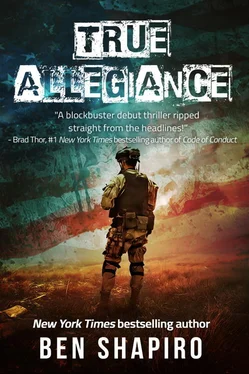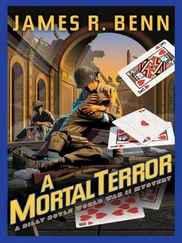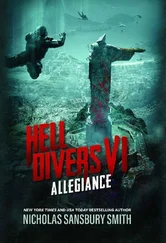President Prescott

Washington, DC
PRESIDENT PRESCOTT ALWAYS FELT a surge of power through his body when he sat in the Situation Room. This is where they had all made their biggest decisions. It’s where Kennedy read teletype during the Cuban Missile Crisis. It’s where President Barack Obama had sat, watching SEAL Team 6 take out Osama bin Laden. And this is where, Prescott knew, he’d be sitting—at the head of the table—while American special operations troops dispatched Ibrahim Ashammi.
Intelligence had recognized General Hawthorne’s signal within minutes of its first airing on the Ashammi hostage video. Hawthorne had spoken the prewritten message from Ashammi just as Ashammi had written it, prompting a national debate on whether Hawthorne should have complied with the propaganda requirements of the world’s leading terrorist. But intelligence kept the fact that Hawthorne hadn’t complied under their hat. While the rest of the world had watched Hawthorne’s mouth, intelligence had watched his eyes .
Hawthorne had been blinking in Morse code. It was an old trick, one Hawthorne must have picked up from Jeremiah Denton, a Vietnam War–era POW. Denton, forced to tape interviews by his North Vietnamese captors, had blinked out the message “T-O-R-T-U-R-E” repeatedly in Morse code, giving the first evidence that America’s enemies in Vietnam weren’t the hippie-loving flower power communists the campus leftists preached about.
The trick must have escaped Ashammi, intelligence figured—how would he know Morse code in the age of text messages and cell phones?—and Ashammi had put out the propaganda tape too eagerly to fully vet it. Hawthorne’s message had been brief but definitive: “AIRSTRIKE NOW. 51.4231. 35.6961.”
The message prompted a full-scale debate inside the White House. It raised too many questions. First, was Hawthorne’s location correct? How would he know where he was, given that prisoners were typically blindfolded and kept in windowless rooms before their executions? If Hawthorne was wrong about the location in a heavily populated area of Tehran, the United States could end up with the blood of dozens on its hands, and an international mess almost impossible to clean up. They could blame it all on Iranian nuclear weapons, but after Iraq, the public wouldn’t be buying.
Second, even if Hawthorne was right, could American aircraft breach Iranian airspace to take out Ashammi? A strike in a populated area would require too much pinpoint accuracy for a missile; military aircraft would have to be utilized. Such an action would surely have grave ramifications for international politics, including ongoing nuclear negotiations with the Iranian regime. It was unlikely that Iran’s military would be able to take out an American warcraft, but there was the real possibility that the Iranians could get lucky. If that happened, the Prescott administration would have to explain not only to the world but to the American people how a regime he’d called “borderline friendly” had killed Americans in order to protect a terrorist mastermind sheltered on their soil. Furthermore, the Israelis were sitting around waiting to strike Iran’s nuclear facilities. With the Americans taking action on Iranian soil, they could take advantage of the situation to double up with a brief bombing campaign, sinking any possibility of a nuclear deal.
Third, what was the political upside? This third question was never spoken among the military brass, of course, but it was the question that drew the most attention from Prescott’s inner circle. On the one hand, taking out Ashammi would be not only a great foreign policy triumph, but it would, in one shot, deflate accusations that Mark Prescott was too much of a coward to stand up to America’s enemies. On the other hand, if Ashammi lived and the American public never found out about Hawthorne’s encrypted message, he’d be seen as a bumbler, a Jimmy Carter on a mission to save hostages. They could still nail Ashammi later—he would just be shadowed until a more convenient time, perhaps when he traveled outside Iran. Then Prescott would give the order to kill him.
In fact, Prescott had been leaning in the direction of leaving things be, but two factors had decided him on action. First, Prescott wanted a taste of glory. He needed the domestic political support to ram through the Work Freedom Program. And it would be difficult for Congress to turn him down days after he had taken out the man responsible for the bombing of several American embassies. He already had his slogan written in his head: “Protecting America from Those Who Would Harm It, Abroad and at Home.”
Second, some right-wing bloggers had caught onto Hawthorne’s signal. Mostly, they were kooky survivalist types, the sorts of folks who posted conspiracy theories on message boards. But the CIA informed Prescott that such information, once it got out, could jeopardize any sort of attack. And if the information began to take hold, Prescott figured for himself, he’d be blamed for doing nothing. Already some of those nuts on Fox News had been making oblique references to the rumors.
But an airstrike was simply too risky.
And so he’d called on the CIA. It had now been four days since the tape; he knew it was possible that Ashammi had moved Hawthorne. He knew the operation would be near impossible. And unlike the bin Laden raid, this wouldn’t be taking place at a quasi-remote estate. The operation would happen in the heart of Tehran, near one of its most prominent landmarks. It would have to be a perfect operation, with no unforeseen factors. His military advisors told him that the possibilities of success were far less than 25 percent.
He authorized it anyway. If they failed, he couldn’t be blamed for trying, or if he could, he’d find a way to call it a well-intentioned mistake. If they succeeded, he’d have made the gutsiest call since Obama. Gutsier, even. What a hashtag that would make!
So now, he sat at the conference table in the Situation Room, surrounded by the members of his cabinet. The chairman of the Joint Chiefs, General Bill Collier, the only man in the room in uniform, bit his lip nervously. The rest of his cabinet leaned forward, watching the night-vision camerawork on the screen. The feed was choppy and slightly delayed, the audio rough and patchy.
On the screen, Prescott watched in fascination as the operatives approached the back door of a Tehran apartment building. They’d been flown over the border quietly, by helicopter; their journey through the desert had been followed every step of the way from the White House. After the initial group touched down, they’d separated, figuring that infiltration of the capital would be easier if they approached the city as individuals. The only hang-up had come when the truck carrying one of them had broken down on the road. That particular operative had been smuggled out of the country, his part of the operation scratched.
Now the CIA operatives, dressed in local garb, set a quick-burning charge on the outside of the ironwork door. It flared brightly, but in the alleyway, there was nobody to see it. One of the operatives gently nudged the door open with his foot. Before him spread a dark hallway.
“No lights,” came an order.
“Check,” whispered one of the men.
They crept down the hallway, visibility no greater than ten feet ahead. To the sides ran door after door. A light flashed on behind one of the doors; an old woman suddenly thrust it open. One of the operatives sprang forward, grabbing the handle and easing it shut. “Police,” he bellowed in Farsi, hoping the rest of the apartment dwellers would hear him. “Stay in your home.” She nodded, terrified, and let the lock click home. In Tehran, questioning the police would have been foolhardy.
Читать дальше













